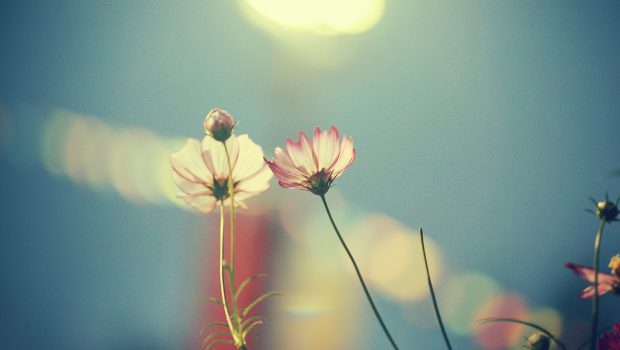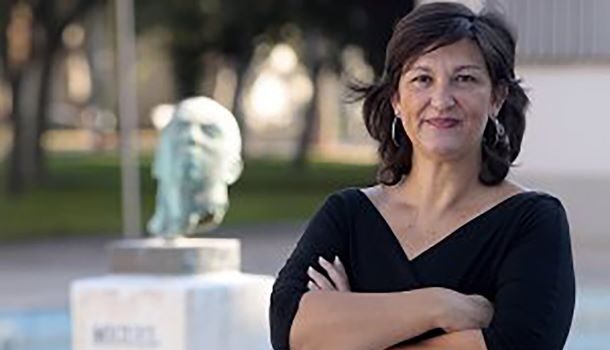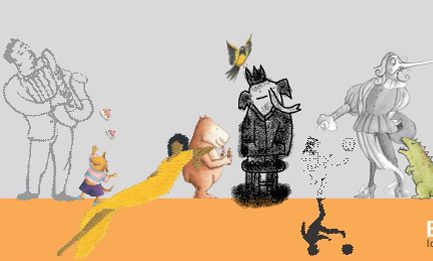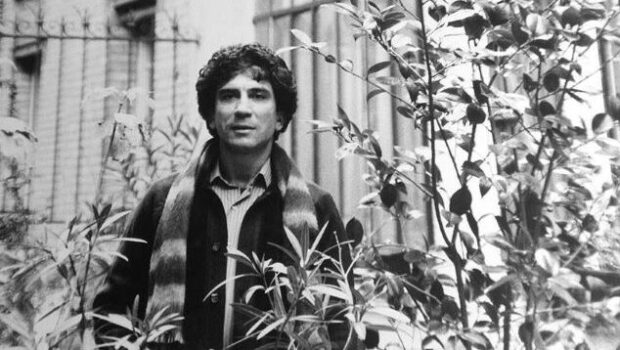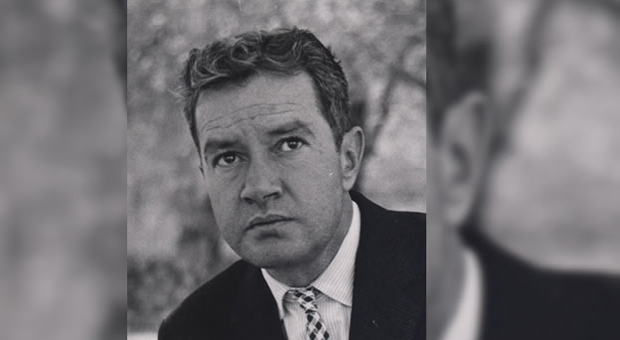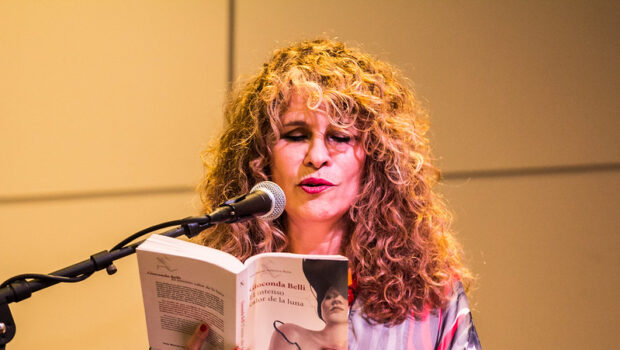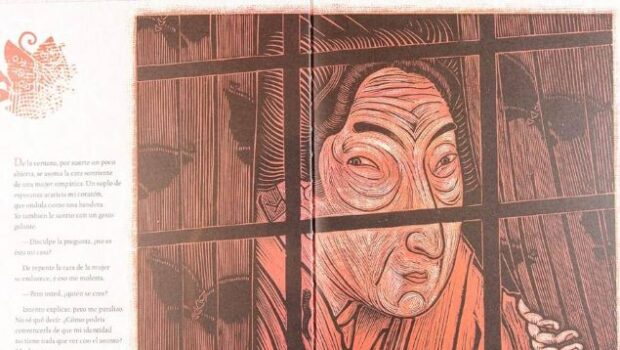Not Free But Comfy: Cuban Art Between State and Market
Yvon Grenier
“The state artist recognizes that the only freedom within the socialist system is that of participation”
Miklós Haraszti, The Velvet Prison: Artists Under State Socialism (1987)
More Equal than Others
Successful artists (painters, sculptors, and performers) are part of the wealthiest 1 percent of the population in Cuba. For two decades, they have been able to sell their works abroad, even to Americans (art is not covered by the US embargo). Cuban art is mostly for export and it is a lucrative business. Artists who play by the rules have been able to leave and return to their country, on their own, for two decades. Ordinary Cubans were only granted this basic universal right (see Art.13 of the Universal Declaration of Human Rights) last January, and “exiled” Cubans are still denied the right to return to the island.
In art, as in other forms of expression, everything is permitted in revolutionary Cuba. Except when it is not. As Fidel Castro proclaimed in 1961, in a famous speech to intellectuals, “Within the revolution, everything; against the revolution, nothing.” The Constitution stipulates: “Artistic creation is free, as long as its content is not contrary to the Revolution. The forms of expression in the arts are free.” Form and content are hard to dissociate in the visual arts. So, who is to make the call on “form” and “content,” and who figures out what is acceptably “within” La Revolución and what is not? Answer: La Revolución herself, that is to say, en dernière instance, Fidel and his brother Raúl.
Since 1959 the ambitious goal of the new regime in Cuba has been to create “a new man in a new society.” Official documents talk about La Revolución as “the most important cultural fact of our history.” By and large, in this “new society” the range of what can be expressed has been reduced, which has hurt creativity, but the array of cultural activities accessible to the population in general has expanded in many areas, namely in music, visual arts and performing arts. The Instituto Superior de Arte (ISA-1976), for instance, produced many very well trained artists, who went on to have successful national and international careers. It is the only graduate school solely for the arts in Latin America. Many, perhaps most of the ISA’s graduates now live in exile.
The visual arts are mostly for the happy few and they are typically less ideationally explicit in their “content” than other artistic or cultural forms. Consequently, in Cuba as in many other non-democratic countries, the government can cut visual artists a little slack. Visual artists have more “space” for expression than, say, writers or popular singers, who in turn enjoy a bit more leeway than academics. Nobody is less free than a journalist in Cuba. In other words, Cubans are all equal, in being denied their “right to freedom of opinion and expression” (Art.19 of the Universal Declaration of Human Rights), but some are more equal than others.
New Cuban Art
Visual artists who have been working within institutional channels have tested the borders of the permissible more often than most other actors in the cultural field. The trend really started during the 1980s, when young painters such as Flavio Garciandia, Tomás Sánchez, José Manuel Fors, José Bedia, Gustavo Pérez, Ricardo Rodríguez, Leandro Soto, Israel León, Juan Francisco Elso, and Rubén Torres challenged the dominant revolutionary didacticism of the previous decade. They were not unlike the painters of the Generación de la ruptura in Mexico (Alberto Gironella, Vicente Rojo, José Luis Cuevas, Vlady, Pedro Coronel), who defied their own dominant ‘socialist realist’ tradition (Mexican muralism) during the 1950s.
The exposition Volumen Uno in January of 1981 in Havana officially inaugurated the so-called “New Cuban Art.” For painter Flavio Garciandia: “When we did Volumen Uno we were very, very conscious of the fact that the ‘state of the arts’ in Cuba was just awful, precisely because of those ideas of programmatic contentism [contenidismo programático]. We knew that Volumen Uno was a political exhibition… very polemical, precisely because we were positioning the problems in another part, not in the ‘content’–we had a completely distinct focus and in that moment this was practically a political challenge. . . Given the circumstances of the context, it was an exhibition that was proposing… art as a totally autonomous activity, not as a weapon of the Revolution as the Constitution says.” This (relative) “autonomy” opened up new artistic possibilities. Arguably, it made it easier for artists to eschew controversial issues or events, such as the tragedy that took place only eight months earlier: the 1980 Mariel boatlift, in which 125,000 people left the country (among them many artists and intellectuals). No reference to this exodus (and the shameful actos de repudio that accompanied it) is made in Volumen Uno. 
The emergence of the New Cuban Art coincided with the twilight of the Cold War and the deepening of globalization in the field of art. The Soviet Union (and its annual four billion dollars-a-year subsidy to Cuba) came to an abrupt end and Cuba was forced to open up to market forces. Meanwhile, in the art world, the Post Cold War era saw the début of numerous new Biennials, far away from the traditional capitals of global art: i.e. Sharjah, UAE (1993), Shanghai (1996), Mercosur (Brazil, 1997), Dak’art (1998) and Busan (Korea 1998). The first Havana Biennial (1984) can be seen as an early manifestation of this trend, in addition to being the only one operated by a socialist country. In the new global market for art, the purported anti-imperialist and anti-consumerist mission of the Havana Biennial offered a refreshing choice for multicultural or postcolonial curators and critics, and a thrilling one for decadently rich consumers. For instance, in 1990 the German chocolate magnate and art collector Peter Ludwig acquired more than two thirds of the exhibition of contemporary Cuban art ‘Kuba OK,’ in addition to many other famous works of the artists of the 1990s generation.
Art and the new Gatekeeper State
The 1980s generation (especially during the second half of the decade) was arguably more audacious and politically driven than the subsequent ones. But most prominent members of this generation left the country at the end of the 1980s and early 1990s. The artists who stayed in the country found a comfort zone, negotiating the terms of their subordination with what political scientist Javier Corrales calls the new “gatekeeper” state: e.g. a state that “decide[s] who can benefit from market activities and by how much.” Thus, the cultural field offered a testing ground for the kind of “segmented marketization” and limited liberalization of subsequent years, when brother Raúl inherited the presidency.
Artists quickly learned to deal with the international market, giving it what it wants: Cubanía products, with muted and aestheticized political overtones that make both the artist and the viewer feel astute, all of which transacted with the global language of art of the time (mainly conceptual art and arte povera). For all the talk about postmodern art in Cuba, the country is literally stuck in modernity, with primary concerns about national identity, sovereignty, material well-being, basic freedom and security. These modern concerns are omnipresent in New Cuban art, where they are at once localized and transcended by postmodern aesthetics. This confers New Cuban Art a trendy “glocal” cachet that simultaneously insinuates and defuses “content.”
Cuban artists are masters of double entendre and detachment (parody, irony, sarcasm, and pastiche). They know what the taboos are: play with the chain but not with the monkey; don’t challenge La Revolución and its metonymic association with the Castro brothers. (About Fidel: according to Andrés Oppenheimer, in the early 1990s the guidelines were revised: “it was forbidden to show him standing next to anybody taller or to show him eating, and it was forbidden to divulge any information on his personal life.”) Yet, the global market likes its Cuban art with a dash of political irreverence. The regime can afford to appear open-minded since it is largely inconsequential on the island.
Even though artists are pretty shrewd when guessing the “parameters,” it is still perilous to “play with the chain.” Expositions have been censored and cancelled; artists are reprimanded and sometimes jailed. The performance artist Angel Delgado got six months in jail for publicly defecating on a copy of the daily Granma, during the exhibition “El objeto esculturado” (1989). According to Luis Camnitzer, the exhibition at the Castillo de La Real Fuerza in February of 1989 was closed “when it was found to include a portrait of Fidel Castro in drag with large breasts and leading a political rally, and Marcia Leiseca, the vice minister of culture, was relocated to the Casa de las Américas.” Artists have been castigated for speaking their mind on the public issues (most recently, for instance, the painter and sculptor Pedro Pablo Oliva lost his studio and his seat in the provincial assembly). Admittedly, it is not simple for outsiders (such as this author) to fully appreciate the day-to-day courage of individuals who strive to work and live under very difficult circumstances in the country of their choice: their own.
Toirac and Kcho
For Cuban curator and art critic Gerardo Mosquera, the painter José Toirac (1966- ) “es quien más sistemáticamente se ha esforzado en criticar desde dentro las representaciones del poder en Cuba.” For him, “Toirac se ha venido ocupando obsesivamente con las representaciones oficiales de Fidel Castro, mostrando sus connotaciones religiosas, transfigurándolas en sentido crítico, o deconstruyendo su retórica propagandística en contraste con la propaganda capitalista de nueva aparición en el país.” In the same vein, for fellow artist Tonel, Toirac’s work is a comment on “the rise of the capitalist corporate image and its clash with another omnipresent likeness—the socialist image of power identified with the figure of Fidel Castro.” This, for him, “reveals the hybridity of social, economic, and ideological aspects of cubanidad.”
Prima facie, Toirac’s numerous portraits of Fidel (or Che) may compel us to examine issues like the cult of personality and the contradictions of Cuban communism during the Special Period in Cuba. This is one possible interpretation, but nothing explicitly critical of Fidel or the dyad Fidel/La Revolución can be found in Toirac’s work. In fact, the opposite interpretation often seems more appropriate. In “Obsession,” the Americans are being lampooned, not Fidel. And yet, many of Toirac’s most audacious paintings cannot be exhibited publicly in Cuba. Toirac’s career is doing well internationally: his work is included in many private and public collections throughout the world, like the Centre Pompidou in Paris and the collection at the Museum of Modern Art in New York. Art critics and cultural theorists appreciate his playful associations of Fidel with religiosity and commercialism. His success both in Cuba and abroad will continue to depend not only on his considerable talent but also on his good judgment in guessing the frontiers of the permissible in a changing political, economic and cultural environment.
The case of artist Alexis Leyva Machado (1970- ), known as Kcho, is particularly interesting. Celebrated as Cuba’s most internationally established artist since Wifredo Lam (1902-82), Kcho almost instantly became an international star in his mid-20s, winning numerous international prizes. In his short career he has had more than 90 solo exhibitions and 200 group exhibitions in 35 countries. His work has been exhibited in major museums and galleries around the world. Kcho is mostly known for his installations, an artistic genre (pioneered by Marcel Duchamp almost a century ago) that came to prominence, at the expense of the conventional media of painting and sculpture, during the 1970s and 1980s. Two of Kcho’s installations are part of the permanent collection of the Museum of Modern Art in New York and his works sell for decent sums, in dollars (in 2007 his La columna infinita II sold at Christie’s New York for $73,000, roughly the equivalent of 240 years of average annual salary in Cuba).
Kcho has been called Fidel Castro’s favorite artist. “I’m proud that Fidel calls me his brother,” he said. He is a Stakhanovite who called upon fellow Cuban artists to join him in working harder to build socialism. He was elected deputy of the Popular Power National Assembly in July 2003 to represent the people of the Isla de la Juventud and he was reelected in January 2008. In 2012 he urged Cuban artists to continue working “gratuita y voluntariamente para el pueblo,” without receiving any tax benefit.
Kcho’s scavenged or improvised materials (beach debris, rocks, driftwood, twigs, pieces of rubber) conjure up the situation of scarcity on the island. Manuel E. González, a Cuban exile and current director of the art program for Chase Manhattan Bank in New York, said: “Kcho is the quintessential Cuban artist of the ‘Special Period.’” More importantly, virtually all of his work deals with the eminently political topic of migration. He uses boats, docks, inner tubes and oars, assembled with “unexpected grace” (Coco Fusco). These are all potent symbols, in the Cuban context, not merely of travel and migration, but of escape.
Perhaps his most famous work is “La Regata” (1994), an installation shown at the 5th Havana Biennial (May-June 1994) and consisting of small wooden toy boats, old shoes and other beached debris assembled in the shape of a larger boat. La Regata was one of the most prominent pieces of the exposition and it appears on the cover of the very official Revolución y Cultura magazine in Cuba (issue No. 5, 1994). It now belongs to the collection of the Ludwig Museum in Cologne, Germany. For Fernando Castro (in Literal, no.3), “The title camouflages with a very Cuban sense of humor what may be going on when a flotilla of vessels suddenly takes a definite direction. ‘The world is made of migrations,’ wrote Kcho. What might be a reference to ‘Marielitos,’ to Elián González, or other local attempts of emigration and exile, Kcho understands as a more general case of the human condition.”
During the summer of 1994, some 34,000 Cubans fled Cuba on makeshift balsas; from 1985 to 1993, according to Cuban migration expert Silvia Pedraza, close to 6,000 balseros managed to reach the United States safely. Thousands drowned. González said about La Regata “People went into that gallery and cried, thinking about how the installation evoked the tragic fate of so many Cubans who have taken to the seas over the years.” But as Julian Stallabrass points out, “Much of this art, while it draws on the resonance of political issues, takes no stand, and is characterized by ironic or mute politics.” As Cuban-American artist and writer Coco Fusco puts it, “while 30,000 rafters were trapped in camps in Guantánamo and other parts of the Caribbean, serving as pawns in a tug of war between Fidel Castro and Washington, the Cuban cultural ministry accelerated its export of raft art.” For her, “Kcho’s floating rafts are a perfect morsel of Havana Lite. His lightweight boats have been emptied of a massive human drama that is his people’s deepest wound.”
Kcho does not discourage political interpretation of his work. The titles of his exhibitions typically give a political frisson: “El camino de la nostalgia” (The road of nostalgia) at Centro Wifredo Lam in Havana, “Tabla de salvación” (Salvation) at the Espacio Abierto Gallery, in Havana; “Todo cambia” (Everything Changes) for the Museum of Contemporary Art (MOCA) in Los Angeles; “Speaking of the Obvious Was Never a Pleasure for Us,” at the Israel Museum, Billy Rose Pavilion, in Jerusalem; “No me agradezcan el silencio” (Don’t Thank Me for the Silence) at Casa de las Américas in Havana. But really, it’s up to the (foreign) viewer to decide for herself what the “content” of Kcho’s art might be.
Conclusion
Cuban artists, writers and intellectuals who are still in Cuba seem to be pretty conformist, and probably not only because the alternative would mean jail, exile or ‘interior exile’ (insilio). Many do support the country’s cultural policy and La Revolución. Be that as it may, it clearly appears that for all their self-proclaimed nonconformity and quest for “space,” what artists crave the most is recognition and participation.
What does the limited but unique government’s opening in the cultural field tell us about Cuban governance as a whole? Is the milieu of art, as Rachel Weiss suggested, a “laboratory in which the security machinery could gain experience in dealing with unrest, something it had not really had to contend with previously”? Possibly, but another interpretation is at least equally plausible: after the collapse of the Soviet Union, the government seemed to have learned, perhaps from what Mario Vargas Llosa called the “perfect dictatorship,” i.e. the 20th century PRI regime in Mexico, that to maintain a monopoly of power a regime does not have to control everything, especially not in the highbrow cultural field. It is actually smart for the regime to support and promote an artist like Kcho, who gratefully pays back. Suddenly, his boats are no more than. . . boats, common objects in an archipelago (Kcho was also born and raised on a small island) and ethereal symbols of “migration.” In sum, to rephrase Weiss’s hypothesis, the security machinery can gain experience in dealing not with unrest but with ambition. As Margaret Thatcher would say, give folks something to loose and they’ll become conservative.
Finally, what does the current situation in the visual arts tell us about the art market and the state of art criticism? Here I take much from Coco Cusco’s thought-provoking comment on Kcho: “For all the facile acknowledgement of the sociological dimension of Kcho’s work, no one seems to be asking how and why a Cuban citizen can zip around the world with symbols of the breakdown of national unity–which at one time could have landed him in prison–while his government continues to prohibit the very sort of emigration he’s representing.” Now Cubans can travel abroad; perhaps they will be very grateful for it, and learn not to be too critical and only at the right time and the right place.
Posted: March 9, 2014 at 1:03 am



